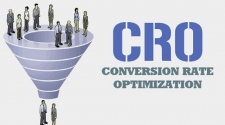Product advertising is in art form and involves any means of communication about the promotion of a product that attempts to entice potential customers to purchase the item. Advertisements usually require payment to a communication channel. The general objective is to drive brand awareness or to highlight the differences between the product and competing products so as to sell them.
Types of Product Advertising
Product advertisement can span the whole media spectrum, from television and radio to print, mail, websites, social media and signs and billboards, to name but a few. A good advertising programme educates consumers on why they need the product, how it is used and the benefits derived from its use.
The type of product advertising used can often depend on the product life cycle – the stages through which a product or its category passes. There are arguably three main types of product advertising – pioneering, competitive and comparative advertising – all of which may be used, depending on where the product currently is in its life cycle. If the product is new to market, pioneering advertising may be used to increase public awareness, whereas competitive advertising is to influence demand for a particular brand and to highlight benefits that may not be available from competing brands. Comparative advertising, meanwhile, compares two or more competing brands on one or a number of specific attributes, whether this is directly or indirectly, giving consumers the logical decision factors that they need.
The Benefits of Print and Packaging
Being so physically close to the product itself, print and packaging are often key to making or breaking the sale, with packaging being the only marketing vehicle that all customers actually see. The package is also the only thing you can have complete control over in-store. The product may end up on the wrong shelf, but the packaging remains a constant and conveys your message to the consumer. The package also has a variety of roles, including attracting new users rather than just retaining existing ones, being easily updated to reflect a new position for the brand or to close a sale with the consumer. Printed advertising also has a strong role to play, with print and packaging services used at all stages of a product’s life cycle.
Point of sale advertising is done, as its name suggests, at the place where the transaction is carried out – often near, next to or on the checkout. It is a specialised form of sales promotion that is intended to draw the customer’s interest to products and leverage last-minute impulse purchasing. Point-of-sale displays are a great way of reiterating what your humble package is saying, creating a sense of need in a consumer’s mind.
Restaurants and retailers frequently use point-of-sale tactics, or print and packaging services, to encourage customers to make last-minute purchases. Items sold at the point of sale are generally low-ticket items that can easily be added to other purchases. They have strongest appeal for impulse customers who are not particularly loyal to a brand.
















